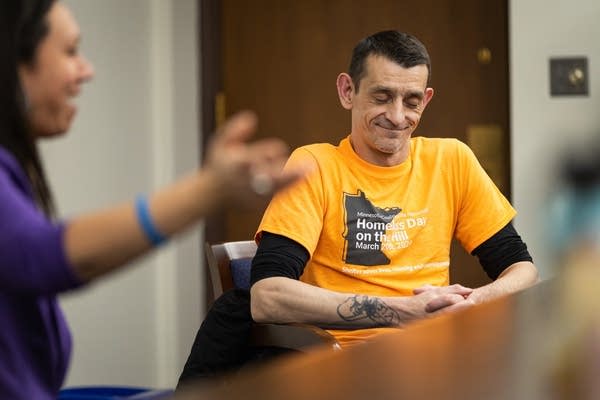Researchers: Homelessness declined slightly in Minnesota since 2018, pandemic effect unclear

Minnesota Coalition for the Homeless engagement fellow Jason Urbanczyk smiles as he listens to Rep. Heather Keeler, DFL-Moorhead, during an advocacy meeting in the State Office Building in St. Paul on Wednesday.
Ben Hovland | MPR News
Go Deeper.
Create an account or log in to save stories.
Like this?
Thanks for liking this story! We have added it to a list of your favorite stories.


